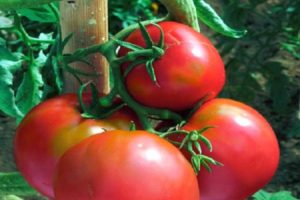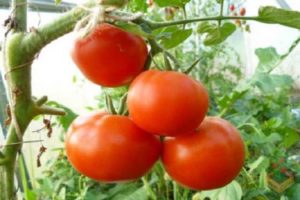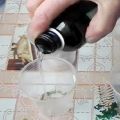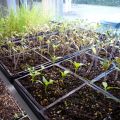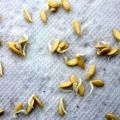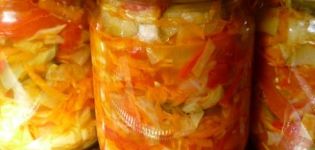What is the shelf life of tomato seeds and how many years they remain viable
Tomato seeds, their shelf life is the time prescribed in the legislation during which they can be sold. So, in the order No. 707 of the Ministry of Agriculture and Food, adopted on October 18, 1999, it is mentioned that the paper bags must be marked with the expiration date (sale).
What is the shelf life of tomato seeds? This period is a year from the date they were found in paper bags. If they are placed in double packaging, use foil or other materials that allow air to pass through well, then instead of 1 year, the shelf life becomes 2 years. That is, for example, if the material for sowing is placed in bags in June 2017, then the date of the implementation date will be put down until July 2018. If it remains in the warehouse until September 2017, and only then will it be packed, then it is already necessary to put a date on the bags that the seed is valid until October 2018, although in fact the seeds are the same.
What does germination mean
Seed germination is the possibility of sprouting from them with proper germination. This is a period of time that depends on which crop the seeds belong to and differs from the shelf life.
How many years can tomato seeds be stored on average? So, it is believed that the shelf life of tomato seeds is 4 - 5 years - during this period, the seeds germinate calmly.
How much can you store tomato seeds as much as possible? Tomato seeds remain viable for up to 7 years, but they need to be checked. You can not look at the date of packaging, but do the test yourself at home, determine the germination of the material.
How to check material for germination? Take a plate, put a napkin in 2 - 3 layers on it or 2 - 3 layers of toilet paper. Dampen the paper with some water. Place the seeds under the layers of the napkin. Place a cellophane bag on a plate. Put the plate in a warm place so that the air temperature in the house is at least 25 degrees. If you see the paper dry, dampen it.
The first shoots should appear in 4 - 5 days.
If less than 30% of the tomato seeds hatch, you can discard them. If sprouts appear in more than 30%, they are suitable for planting, they should be left, sown on seedlings or planted in the ground. But take more seed than is required by the rates, given what percentage of them have sprouted. Then place in bags, write down what percentage rose after the test. When you decide to plant seeds, sort the bags with the labels.
How to collect and store seeds from your tomato bushes
Some growers plant material harvested from bushes.This method has two advantages: you do not need to spend money on buying and the bushes that grow better adapt to the given climate and planting site. But do not forget that seeds cannot be harvested from tomato hybrids, since it is not known what will grow from them.

Tomato is a self-pollinating crop, so you can easily collect seeds from varietal tomato bushes.
The largest, most beautiful fruits are selected to collect high quality seeds. Collect them from those fruits that ripen first, in the greenhouse remove the tomatoes from the second brush, and in the area from the first, since the first brushes bloom first, when the pollinating insects are not yet very active, the risk of cross-pollination is lower.
In addition, the largest tomatoes grow on the first clusters. Another reason is that if you delay the collection of fruits and remove them not from the first or second hand, then the risk of various diseases increases.
It is better to shoot brown tomatoes or tomatoes that are already painted in the characteristic color of the variety, but are not yet fully ripe. Overripe tomatoes are not suitable for this, since they contain embryos that are already ready to germinate and will not germinate after drying. Only remove tomatoes from healthy plants.
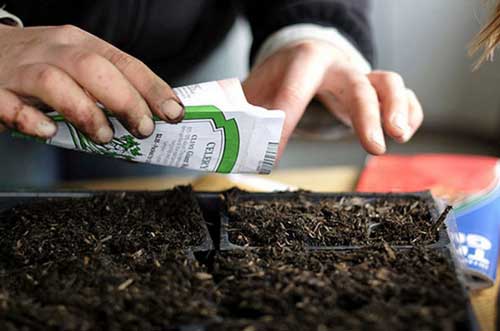
Rinse brown tomatoes thoroughly, dry, place in a warm place to ripen. Just make sure that the tomatoes are not overripe. Glue the paper on the jar and write the grade on it.
Then cut the rafts across, squeeze the seeds into a glass jar. Pour in water and let them ferment to separate the pulp. The terms of finding parts of a tomato in water is 2 - 4 days. Then rinse and dry the material.
The best conditions for preserving seeds
Tomato seeds are poured into cloth bags and rubbed by hand to remove debris. After they are poured out of the bags, placed in a weak saline solution, left - then all the garbage floats. Then they are washed and dried.
Seeds are stored in paper bags, where they write the name of the variety, the date of collection. Germination is preserved when the bags are placed in a room with an air temperature of +6 - 12 ° C and a humidity of 55%. Many gardeners write that they kept tomato seeds in the bottom of the refrigerator or on the veranda. But remember that the seed is spoiled by sudden changes in temperature and humidity. In winter, the seed is examined, sorted out, the decayed is thrown away, and the remaining ones are then planted.
Preparing for landing
In the spring, before planting, make a salt solution. Pour 1 teaspoon of salt into a glass of clean water, stir thoroughly. Pour in seeds. The duration of their stay in a salt solution is 10 minutes. After this time, the lightest seeds that are not suitable for planting float up, they are thrown away, and those that have sunk to the bottom are collected. These are seeds suitable for sowing, they are washed and planted on seedlings.
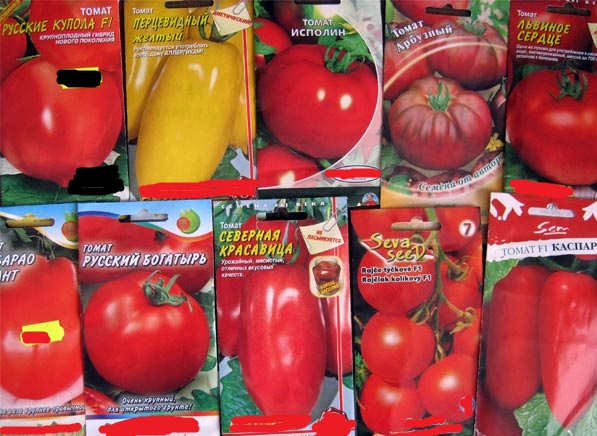
If you purchased material for seedlings in a store, then it is already pickled and does not need to be further processed, otherwise the seeds will lose their germination. If the seeds are collected on the site, then they must be treated for diseases before planting. Place them in a cloth bag and put in a 1% solution of potassium permanganate for 15 minutes. You cannot keep for more minutes or make a more concentrated solution, otherwise you will ruin the sowing material.
Instead of potassium permanganate, use a 2 - 3% solution of hydrogen peroxide, heated to a temperature of 40 - 45 ° C, place the material for inoculation in the solution for 7 - 8 minutes, and then be sure to rinse.
You can also use phytosporin. Put 4 drops of phytosporin in a glass of water and place the seeds there for 15 minutes, then rinse. Fitosporin-M is a biofungicide containing spores and cells of bacteria living in the earth.
In the spring before planting, seed germination is carried out.To do this, they are soaked in aloe juice, in a solution with the addition of trace elements, in a solution of Epin-Extra, Zircon, Virtana-Micro, Immunocytophyte.
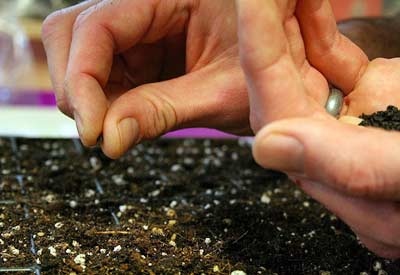
Zircon - the composition accelerates the growth of culture, the formation of roots, the bush blooms more abundantly and more fruits are tied. Refers to phytohormones, increases the immunity of the culture to diseases.
Immunocytophyte is a natural composition that stimulates growth, the emergence of the root system, the active development of culture, which reduces the risk of diseases under stress. In addition, the composition increases the yield by 1/3, reduces losses from decay during storage. Helps faster healing of wounds in plants that are caused by insects or weather conditions (hail).
Place 1 - 2 drops of Epin-Extra in half a glass of pure water. Place the seeds in a cheesecloth bag and immerse them in the solution for 18 - 20 hours at a water temperature of + 20 ° C. If the seeds lie in the solution for a longer period of time, they will suffocate. Then they are sown in boxes filled with soil.
Epin-Extra is a herbal composition that stimulates crop growth and makes it more adaptable to weather conditions. Tomatoes tolerate sharp fluctuations in lighting, air temperature, humidity better, become more resistant to adverse weather (heat and drought, heavy rains).
